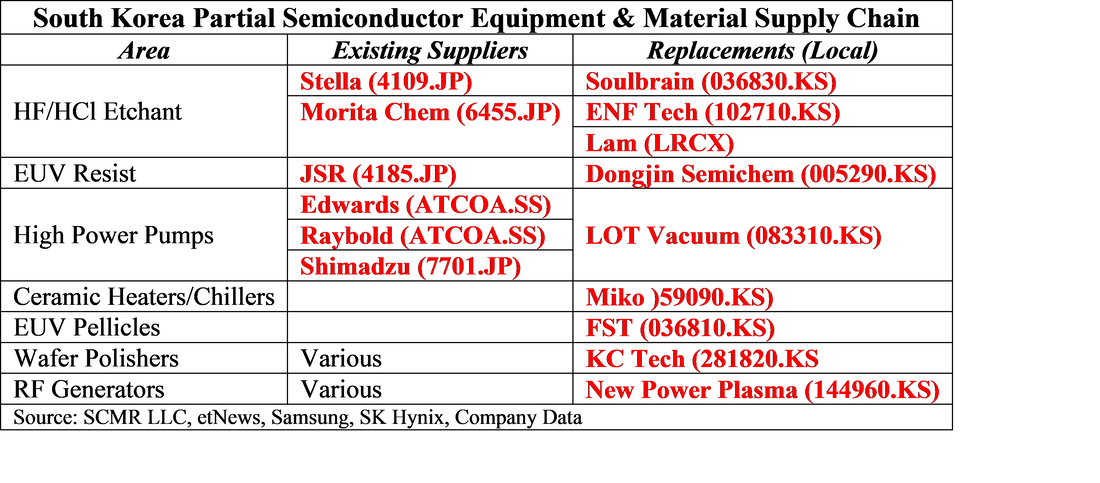Still Fighting the Good Fight
Now, almost two years later, Samsung is evaluating a local South Korean chemical company, Paik Kwang (001340.KS) as a local supplier of Hydrochloric Acid to reduce its dependence on Japan’s semiconductor etchants. With Samsung using 80% of Korea'’ etchant output, it is obvious that their dependence remains, with Linde (LIN) of Germany and Japan’s Toagosei (4045.JP) being the company’s primary etchant suppliers, and while final approval has yet to be made, Paik Kwang has indicated that they are ready to mass produce the high quality HCl that is required.
Samsung is not the only one looking to disengage itself from Japan and other global suppliers, although late last year they made investments in four of the companies below totaling $65.4m, after a $97.2m investment earlier in the year in other MPE companies. SK Hynix (000660.KS), the world’s 3rd largest semiconductor company is also looking to step back from its global supply chain and has been looking to replace a number of semiconductor equipment and material suppliers with local providers. That said, this is not a task that happens overnight, and local producers, particularly chemical suppliers, have had problems with material purity, but are working with Samsung and others to expand and meet quality metrics although the qualification process can be a long one. The table below shows some of the areas where South Korean suppliers are looking to become main sources of key semiconductor materials.
Under the title of “if you can’t beat them buy them”, South Korean film manufacturer KNW (105330.KS) just completed the acquisition of Solvay Korea from Solvay SA (SOLB.BB), a provider of Fluorine and Sulfur Hexafluoride, for just under $50m US. The six production sites in South Korea will now become local producers of a basic material used to produce Hydrogen Fluoride based semiconductor materials and materials for battery production.

 RSS Feed
RSS Feed